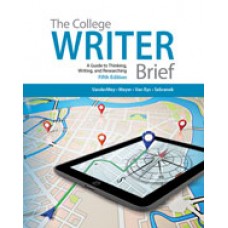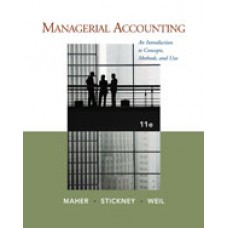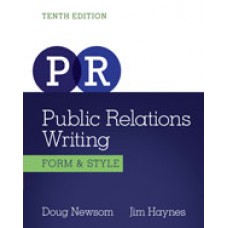Solution Manual for Steps to Writing Well, 11th Edition
$35.00 Original price was: $35.00.$26.50Current price is: $26.50.
Solution Manual for Steps to Writing Well, 11th Edition
Solution Manual for Steps to Writing Well, 11th Edition

Product details:
- ISBN-10 : 1337899798
- ISBN-13 : 978-1337899796
- Author: Jean Wyrick
Combining detailed coverage of the writing process with a wealth of professional readings, Wyrick’s STEPS TO WRITING WELL WITH ADDITIONAL READINGS has helped thousands of students learn to write effective academic essays. Extremely student-friendly, it presents rhetorical strategies for composing essays in an easy-to-follow progression of useful lessons and activities. With over 70 student and professional readings and a variety of hands-on activities, it gives you the models and practice you need to write well-constructed essays with confidence. The 11th edition features useful visual learning aids, student writing samples on timely topics, assignments that promote using sources and multiple rhetorical strategies, and updated discussions of multimodal texts and online databases. It also reflects guidelines from the APA’s 2020 Publication Manual. Now available: MindTap digital learning solution.
Table contents:
Part I: THE BASICS OF THE SHORT ESSAY.
1. Prewriting. Getting Started. Selecting a Subject. Finding Your Essay�s Purpose and Focus. Pump-Primer Techniques. After Youve Found Your Focus. Practicing What You�ve Learned. Discovering Your Audience. How to Identify Your Readers. Practicing What You�ve Learned. Assignment. Keeping a Journal (Talking to Yourself Does Help). Chapter 1 Summary.
2. The Thesis Statement. What Is a Thesis? What Does a Working Thesis Do? Can a Working Thesis Change Guidelines for Writing a Good Thesis. Avoiding Common Errors in Thesis Statements. Practicing What You�ve Learned. Assignment. Using the Essay Map. Practicing What You�ve Learned. Assignment. Chapter 2 Summary.
3. The Body Paragraphs. Planning the Body of Your Essay. Composing the Body Paragraphs. The Topic Sentence. Focusing Your Topic Sentence. Placing Your Topic Sentence. Practicing What You�ve Learned. Assignment. Applying What You�ve Learned to Your Writing. Paragraph Development. Paragraph Length. Practicing What You�ve Learned. Assignment. Applying What You�ve Learned to Your Writing. Paragraph Unity. Practicing What You�ve Learned. Applying What You�ve Learned to Your Writing. Paragraph Coherence. Practicing What You�ve Learned. Paragraph Sequence. Transitions between Paragraphs. Applying What You�ve Learned to Your Writing. Chapter 3 Summary.
4. Beginnings and Endings. How to Write a Good Lead-In. Avoiding Errors in Lead-Ins. Practicing What You�ve Learned. Assignment. How to Write a Good Concluding Paragraph. Avoiding Errors in Conclusions. Practicing What You�ve Learned. Assignment. How to Write a Good Title. Practicing What You�ve Learned. Assignment. Applying What You�ve Learned to Your Writing. Chapter 4 Summary.
5. Drafting and Revising: Creative Thinking, Critical Thinking. What Is Revision? When Does Revision Occur? Myths about Revision. Can I Learn to Improve My Revision Skills? Preparing to Draft. Some Basic Tips for Drafting. Some Hints When Drafting on a Computer. Some Hints When Handwriting a Draft. Writing Centers, Computer Classrooms, and Electronic Networks. Procrastination: Enemy of Critical Thinking, Thief of Time. I. Revising for Purpose, Thesis, and Audience. II. Revising for Ideas and Evidence. What Is Critical Thinking? Thinking Critically as a Writer. Critical Thinking and Visual Literacy. III. Revising for Organization. IV. Revising for Clarity and Style. V. Editing for Errors. VI. Proofreading. A Final Checklist for Your Essay. Sample Student Essay: The Fear No One Talks About. Practicing What You�ve Learned. Assignment. Applying What You�ve Learned to Your Writing. Collaborative Activities: Group Work, Peer Revision Workshops, and Team Projects. Benefiting from Collaborative Activities. Guidelines for Peer Revision Workshops. Guidelines for Small-Group Work. Practicing What You�ve Learned. Assignment. Some Last Advice: How to Play with Your Mental Blocks. Chapter 5 Summary.
6. Effective Sentences. Developing a Clear Style. Practicing What You�ve Learned. Developing a Concise Style. Practicing What You�ve Learned. Assignment. Developing an Engaging Style. Practicing What You�ve Learned. Assignment. Developing an Emphatic Style. Practicing What You�ve Learned. Assignment. Applying What You�ve Learned to Your Writing. Chapter 6 Summary.
7. Word Logic. Selecting the Correct Words. Practicing What You�ve Learned. Selecting the Best Words. Practicing What You�ve Learned. Assignment. Applying What You�ve Learned to Your Writing. Chapter 7 Summary.
8. The Reading-Writing Connection. How Can Reading Well Help Me Become a Better Writer? How Can I Become an Analytical Reader? Steps to Reading Well. Sample Annotated Essay: College for Grown-Ups.? Practicing What You�ve Learned. Assignment. How Can I Read Multimodal Texts Analytically? Steps to Reading Multimodal Texts Well. Sample Annotated Advertisement. Writing a Summary. Practicing What You�ve Learned. Benefiting from Class Discussion. Practicing What You�ve Learned. Chapter 8 Summary. Part One Summary: The Basics of the Short Essay. Part II: PURPOSES, MODES, AND STRATEGIES.
9. Development by Example. Why and How to Use Examples In Your Writing. Developing Your Essay. Problems to Avoid. Practicing What You�ve Learned. Essay Topics. A Topic Proposal for Your Essay. Sample Student Essay
1: If You Want to Get to Know a New Place, Go For a Run. Sample Student Essay
2: A Small Guy with a Big Heart. Professional Essay: So What�s So Bad about Being So-So?. A Revision Worksheet. Reviewing Your Progress. Using Strategies and Sources.
10. Process Analysis. Types of Process Analysis Essays. Developing Your Essay. Problems to Avoid. Practicing What You�ve Learned. Essay Topics. A Topic Proposal for Your Essay. Sample Student Essay
1: An Experiment in Spending Less. Sample Student Essay
2: From the Shower to the Stage. Professional Essay (Informative Process): To Bid the World Farewell. Professional Essay (Directional Process): �Preparing for the Job Interview: Know Thyself.� A Revision Worksheet. Reviewing Your Progress. Using Strategies and Sources.
11. Comparison and Contrast. Developing Your Essay. Which Pattern Should You Use? Problems to Avoid. Practicing What You�ve Learned. Essay Topics. A Topic Proposal for Your Essay. Sample Student Essay (Point-by-Point Pattern): �When It�s Time to Study, Get Out of Your Pajamas.� Sample Student Essay (Block Pattern): �More Than Just the Crust: New York and Chicago Style Pizza.� Professional Essay (Point-by-Point Pattern): �Grant and Lee: A Study in Contrasts.� Professional Essay (Block Pattern): �Two Ways of Viewing the River.� A Revision Worksheet. A Special Kind of Comparison: The Analogy. Reviewing Your Progress. Using Strategies and Sources.
12. Definition. Why Do We Define? Developing Your Essay. Problems to Avoid. Practicing What You�ve Learned. Essay Topics. A Topic Proposal for Your Essay. Sample Student Essay
1: �”Slang Rebels” Sample Student Essay
2: “Oxford English Dictionary: Laureate” Professional Essay: “What Shamu Taught Me About a Happy Marriage”.� A Revision Worksheet. Reviewing Your Progress. Using Strategies and Sources.
13. Division and Classification. Division. Classification. Developing Your Essay. Problems to Avoid. Practicing What You�ve Learned. Essay Topics. A Topic Proposal for Your Essay. Sample Student Essay
1: �The Native American Era at Mesa Verde.� Sample Student Essay
2: “Online Learning-Effects on Students” Professional Essay (Classification): �The Plot against People.� Professional Essay (Division): �What Is REALLY in a Hot Dog?� A Revision Worksheet. Reviewing Your Progress. Using Strategies and Sources.
14. Causal Analysis. Developing Your Essay. Problems to Avoid. Practicing What You�ve Learned. Essay Topics. A Topic Proposal for Your Essay. Sample Student Essay
People also search:
steps to writing well 11th edition answer key
steps to writing well 11th edition pdf
what are the steps to writing a good essay
how to write a step by step essay
You may also like…
Solution Manual
Solution Manual
Solution Manual
Solution Manual
Solution Manual for Introduction to Management Science, 11/E 11th Edition Bernard W. Taylor
Solution Manual
Solution Manual for Introduction to Java Programming, Brief Version, 11th Edition, Y. Daniel Liang
Solution Manual
Solution Manual for Psychology Applied to Modern Life Adjustment in the 21st Century, 11th Edition
Solution Manual












